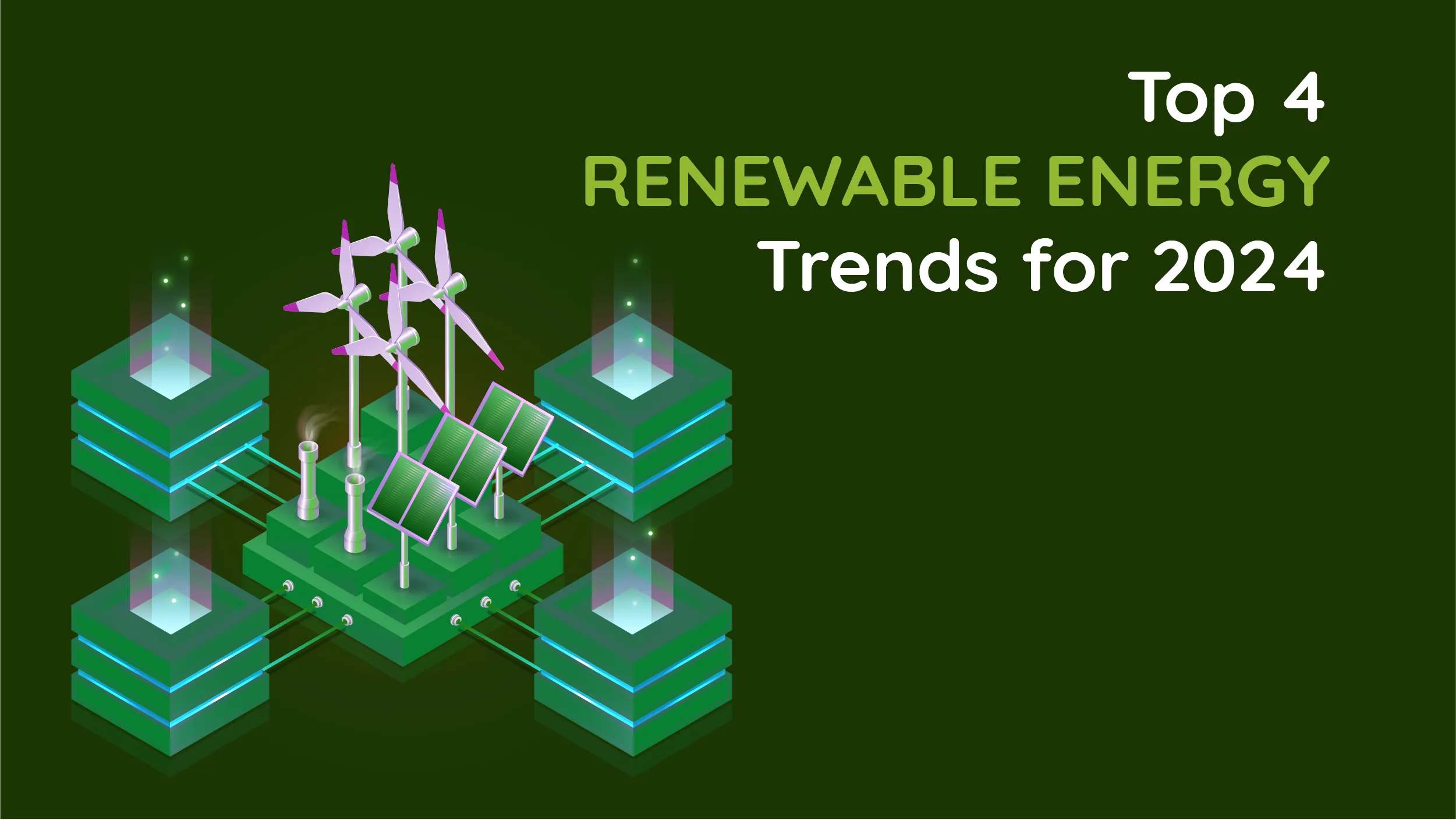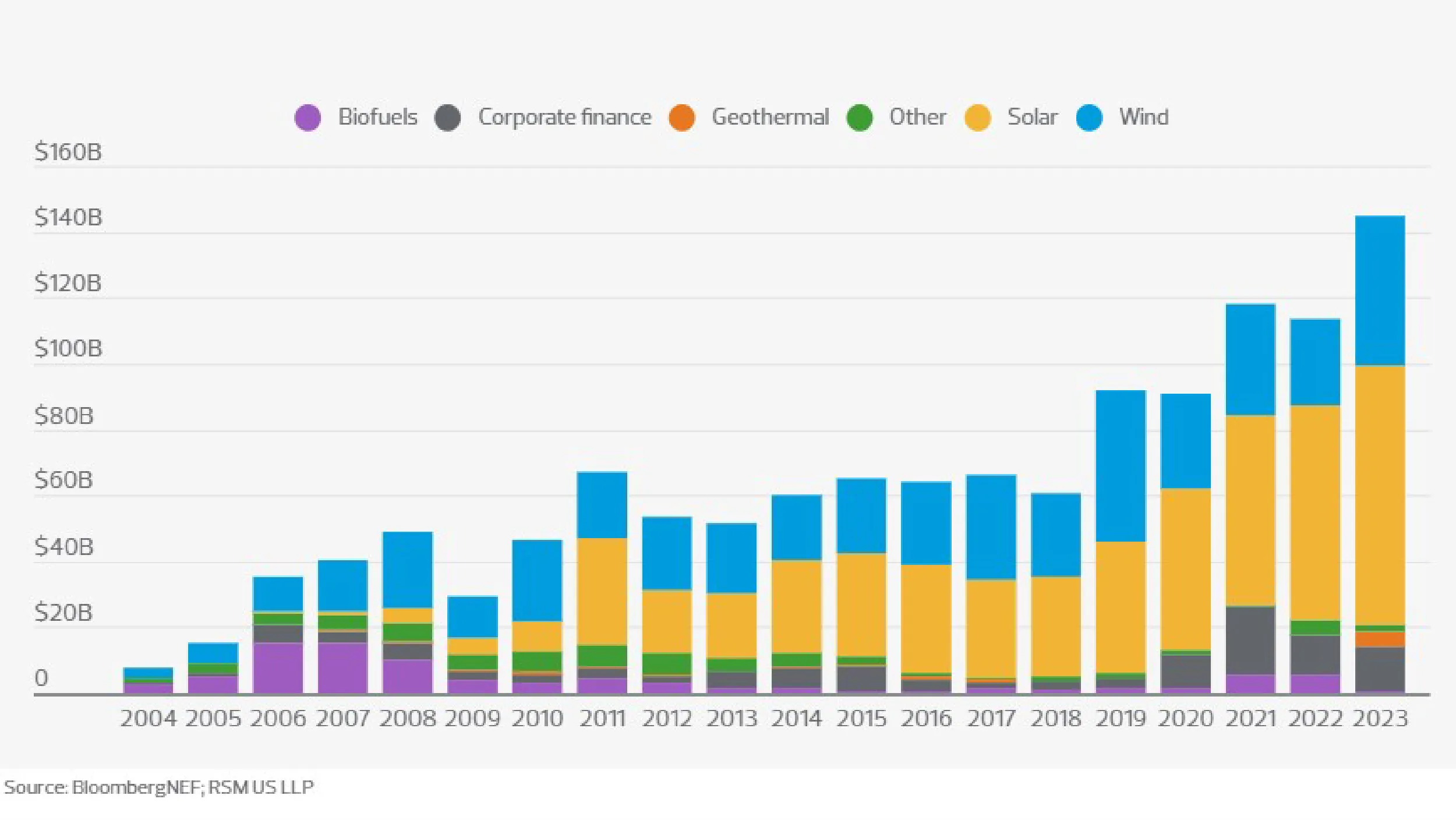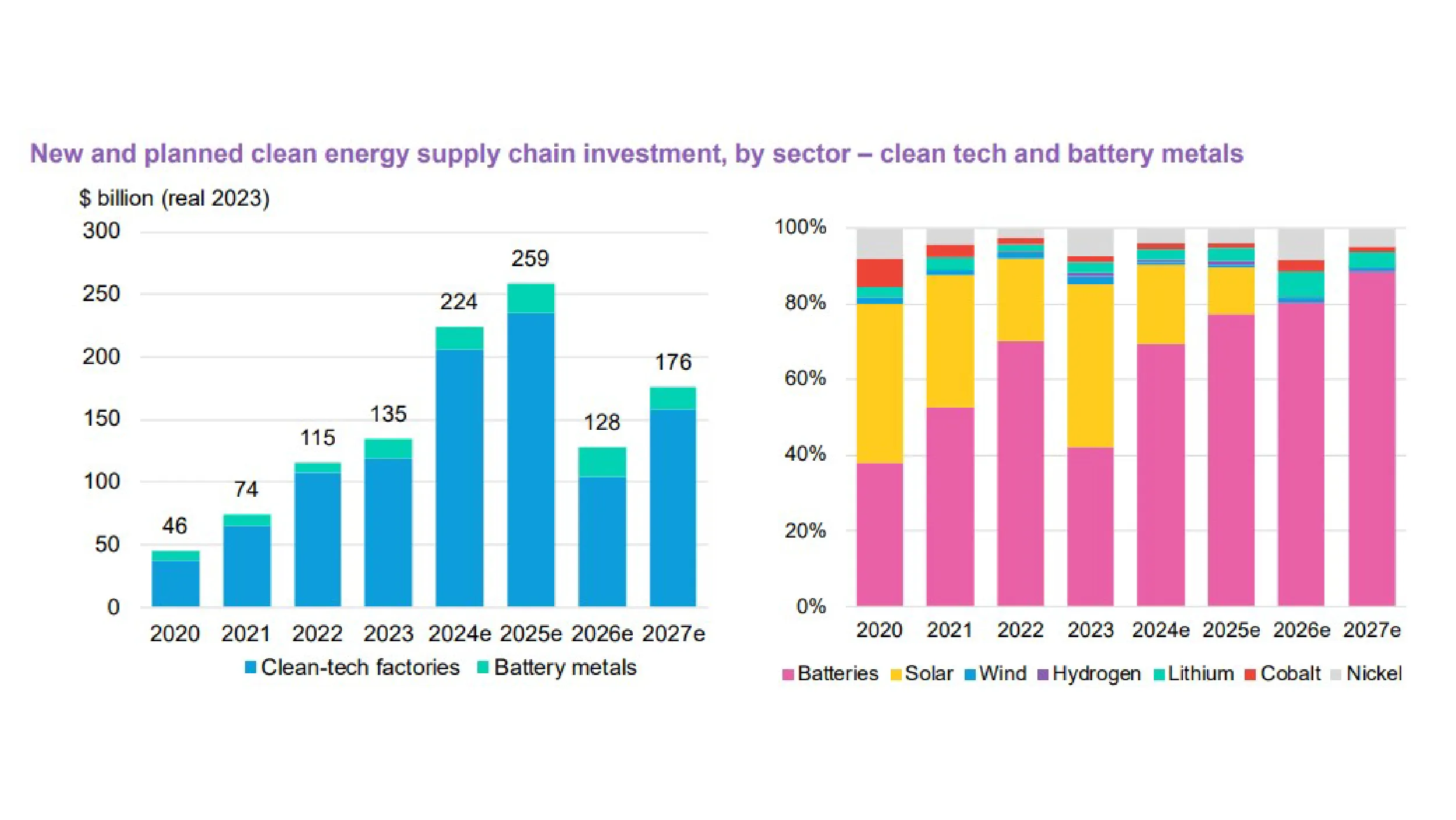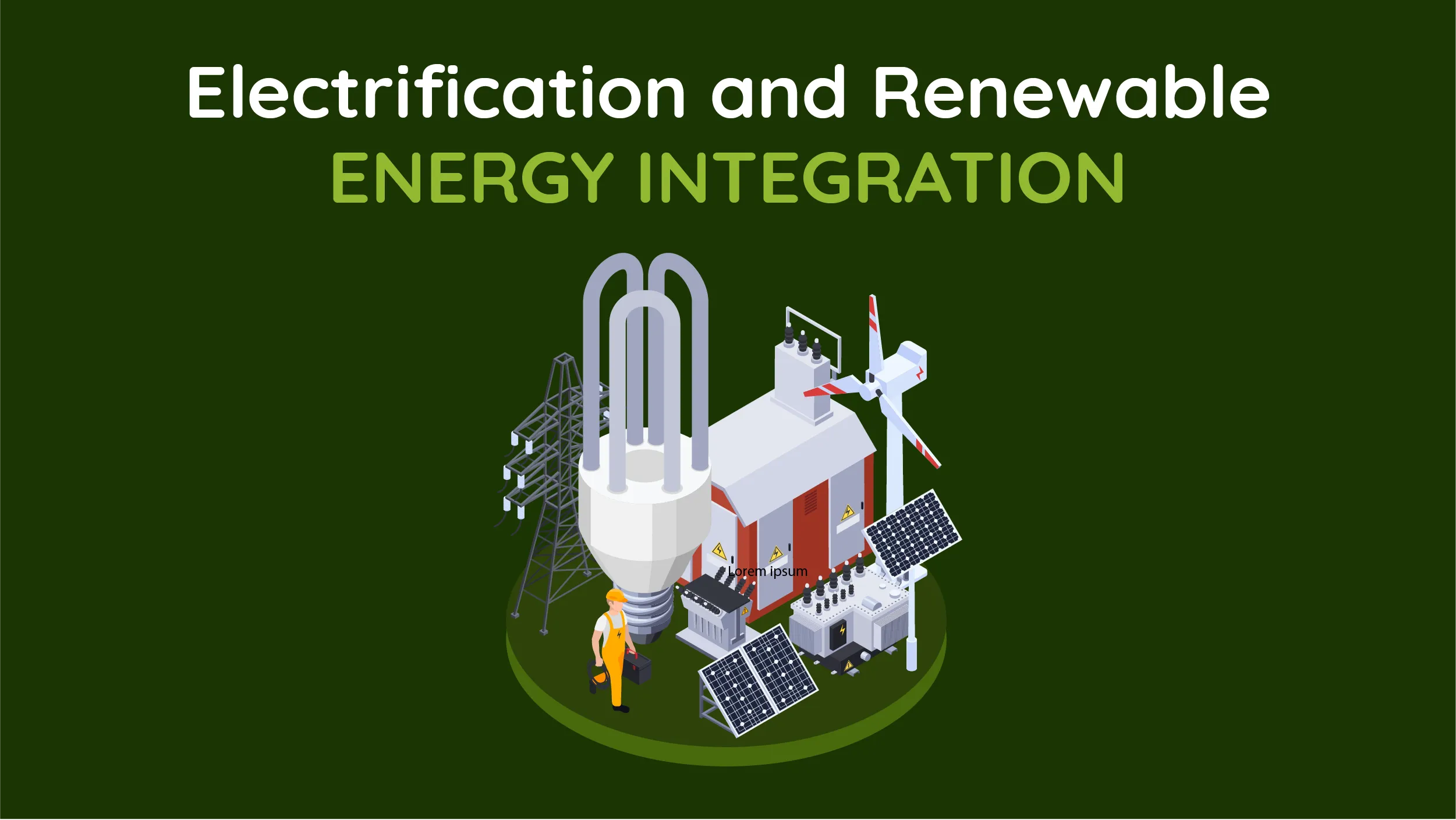Renewable energy is the hottest topic all over the globe. This is mostly because of the growing importance of curbing carbon emissions and finding an alternative that could quite literally save the planet.
According to a BloombergNEF report, global investments in clean energy reached $1.8 trillion in 2023, an increase of 17%. With China leading the pack, investing $676 billion in 2023—this uphill battle of different countries to improve renewable power is still going on. This blog discusses the top 4 renewable energy trends for 2024 and beyond.
Top 4 Renewable Energy Trends for 2024

1. Investment in Renewable Energy
Both public and private capital have been stimulated by the Inflation Reduction Act (IRA) and other government initiatives, with public capital acting as a force multiplier for private capital. Regulations and tax rebates for investments in renewable energy have also been proposed by Canada.

In 2023, the U.S. invested over 140 billion in wind energy. This increase in investment is also being driven by broader environmental, social, and governance (ESG) measures, which are pushing businesses from all sectors to decarbonize. All of these point to a dramatic transition away from traditional fossil fuel dependence and toward more sustainable methods.
2. Biofuel Expansion
Global biofuel expansion is currently underway, driven significantly by supportive government policies in emerging economies such as Brazil, India, and Indonesia. In these countries, the transportation sector is a major driver of demand for biofuels, while the supply is facilitated by the availability of biomass feedstock. Brazil stands out as a leader in this expansion, expected to contribute to 40% of the global biofuel growth by 2028
In contrast, biofuel expansion is more limited in the EU, US, Canada, and Japan, partly due to high costs and the increasing popularity of electric vehicles. In these regions, the primary areas of growth for biofuels are in the renewable diesel and biojet fuel segments. Despite the limited growth, biofuels like bioethanol and biodiesel, when used alongside electric vehicles (EVs), have the potential to offset the equivalent of four million barrels of oil by 2028.
However, despite these advancements, the International Energy Agency (IEA) projects that biofuel expansion will still fall short of meeting the 2030 Net Zero Emissions (NZE) goals. While milestones are being achieved, there remains a gap between current growth rates and the targets set for reducing global carbon emissions.
Also Read: Carbon Management: Importance, Examples, and Key Strategies
3. Surge in Clean Energy Supply Chain Investment
Investment in clean energy supply chains is poised for significant growth, with a 66% increase expected from 2023 to 2024. This surge is driven by rising demand for clean technology, particularly in the development of battery gigafactories.
The clean energy supply chain is primarily divided into two main segments: clean-tech factories that manufacture equipment and facilities involved in the extraction and processing of battery metals.
In 2023, total spending across these segments reached $135 billion, indicating a strong commitment to expanding clean energy infrastructure. Although investment in battery metals made up just 11% of the total in 2023, projections suggest this share could grow to 18% by 2026.

However, investments in battery metal mines often require longer lead times and are planned well in advance, unlike solar module factories, which may have plans disclosed only a few months before they begin operations. This difference means that visibility on solar factory investments for the years 2026-2027 remains relatively low.
These trends highlight a focused push toward expanding the capacity and efficiency of clean energy production, reflecting the growing importance of renewable energy solutions in global energy strategies.
4. Electrification and Renewable Energy Integration

There has been a shift towards electrifying technologies traditionally powered by fossil fuels, such as transitioning from internal combustion engines to electric vehicles and from gas furnaces to heat pumps.
Alongside this, power utilities are increasingly required to use renewable energy sources to meet the rising demand, especially from data centers supporting the growth of cloud computing and artificial intelligence.
Integrating renewable energy into existing power grids is essential for the energy transition. Investments in battery storage, smart grid technologies, and the modernization of transmission infrastructure are key to enhancing renewable energy adoption and managing the intermittency of sources like wind and solar power.
Winding Up
As the world progresses toward a more sustainable future, renewable energy trends will increasingly emphasize advanced technologies such as energy storage systems and smart grids, enabling greater efficiency and reliability in energy distribution.
The integration of artificial intelligence will optimize energy management, allowing for real-time adjustments based on consumption patterns and environmental conditions. Decentralized energy generation through community solar projects like floating solar and microgrids will empower individuals and localities, reducing dependence on traditional energy sources.




